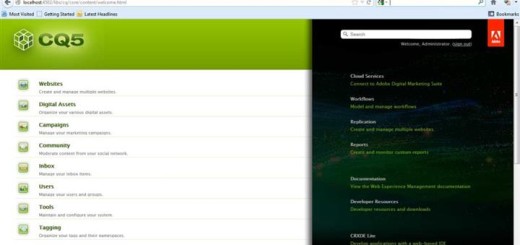SEO TIPS
SEO Tip #1: Find the Best Keywords
It would be a waste of your time to optimize your website for keywords that are not even being searched for. Therefore you should invest some energy into finding the best keywords. There are several SEO tools available on the Internet to help you find the best keywords. Tip: Don’t be deceived by organizations that require you to register first. The two most popular resources are WordTracker and Yahoo!. Because Yahoo! has a man-made database that truncates plurals, I prefer to use WordTracker (WT).
Below is a screenshot from WT that shows the results you’ll get when doing a query for “putter”. Notice that “golf putters” has the highest search volume with 100 searches in the last 24 hours, yet there are over 100,000 websites to compete against. Using the tool’s Keyword Effectiveness Index (KEI), you’ll be able to see that “custom putter” would have a better chance at higher ranking, since there are only 2,640 competing.

Here’s a key part of the top SEO tips: When using any SEO tool for doing keyword research, start by keeping your searches ambiguous like we did in the example above for “putters”. The results will always return suggestions, sometimes surprising ones that you may not have thought of.
SEO Tip #2: Optimize Your META Tags
META tags are hidden code read only by search engine webcrawlers (also called spiders). They live within the HEAD section of a web page. There are actually 4 very important META tags you need to worry about. Meta tags specifying who the author is and what the site is about really isn’t important to the search engines that matter the most (i.e.: Google). The META tags you need to be the most concerned about are:
1. robots
2. content-type
3. description
4. keywords
Sequencing of these tags may be extremely important. I say “may” because SEO is mostly hypothesis due to the changing algorithms of the search engines. Even though the W3C states that tag attributes do not have to be in any particular sequence, I’ve noticed a significant difference when I have the tags and attributes in the order described here. The only deviation from the list above is that the Title tag should come after content-type and before description.
The robots META tag tells the various search engine spiders whether or not you’d like them to crawl through your web page as well as where to start in their crawling activity. Top SEO Tips wouldn’t be worthless without META robots, so long as you use a Robots.txt file. It’s not too hard to see why this tag can still be important. Here is the syntax:
<meta name=”robots” content=”index, follow” />
You can change the “index” to “noindex” and the “follow” to “nofollow” if you do not want your website to be indexed. Though, I have no idea why you wouldn’t want to be indexed.
Content-type is important to complex search engines like Google. This tag tells the spider what type of page you are posting, which helps the search engine categorize the listing. It also shows that you are following the World Wide Web Consortium (W3C) guidelines, which could be an indication of a site being “optimized”. Here is the syntax used on this page:
<meta http-equiv=”Content-Type” content=”text/html; charset=UTF-8″ />
The description META tag is the text that will be displayed under your title on the results page. See the OC Internet Advertising example above. There’s also a lot of controversy about the number of characters you should have in this tag. I’ve seen sites with a paragraph in their description listed in the top results, so I don’t think this tag has very much weight.
However, if you want the listing to look clear and to the point, my Top SEO Tips for this META tag would be to keep it under 150 characters and to not repeat your keywords more than 3 times. It may be a coincidence, but I’ve also noticed ranking improvements when I put my keywords at the beginning of the description. Here’s the syntax:
<meta name=”description” content=”your_keywords_here followed by a statement about your product service or organization.” />
The last important META tag is the keywords META tag, which recently lost a lot of points in Google’s search engine algorithm. Along with being valuable to this top SEO tips list, this tag is still important to many other search engines and should not be ignored. Based on my experience with this tag, you can have approximately 800 characters in this tag (including spaces).
SEO Tip: if you repeat your keywords more than 3 times it can be a pretty good indication to the search engine that you are trying to spam their search results. Also, don’t waste your time including keywords that aren’t used in the BODY section of your website, that could be seen as another spam technique. Here’s the syntax used on this Top SEO Tips page:
<meta name=”keywords” content=”top seo tips, what is seo, resources, seo software, seo ebook, search engine optimization” />
SEO Tip #3: Use Headings
In college and some high schools, essays are written using a standard guideline created by the Modern Language Association (MLA). These guidelines included how to write you cover page, title, paragraphs, how to cite references, etc. On the Web, we follow the W3C’s guidelines as well as commonly accepted “best practices” for organizing a web page.
Headings play an important role in organizing information, so be sure to include at least H1-H3 when assembling your page. Using cascading style Sheets (CSS), I was able to make my h1 at the top of this page more appealing. Here’s a piece of code you can pop into your heading:
</p> <mce:style type=”text/css”><!– h1 font-size: 18px;h2 font-size: 16px;h3 font-size: 14px; –></mce:style><style type=”text/css” mce_bogus=”1″>h1 font-size: 18px;h2 font-size: 16px;h3 font-size: 14px;</style> <p>
Since a page full of headings would look just plain silly, my SEO tip would be to fill in the blank space with paragraphs, ordered and unordered lists, images, and other content. Try to get at least 400+ words on each page.
SEO Tip #4: Use Title and ALT Attributes
More often then not, web addresses (URL’s) do not contain the topic of the page. For example, the URL www.myspace.com says nothing about being a place to make friends. Where a site like www.placetomakefriends.com would tell Google right away that the site being pointed to is about making friends. So to be more specific about where we are pointing to in our links we add a title attribute and include our keywords.
Using the Title Attribute is an direct method of telling the search engines about the relevance of the link. It’s also a W3C standard for making your page accessible to disabled people. In other words, blind folks can navigate through your website using a special browser that reads Title and ALT attributes.
SEO Tip #5: Nomenclatures
Whenever possible, you should save your images, media, and web pages with the keywords in the file names. For example, if your keyword phrase is “golf putters” you’ll want to save the images used on that page as golf-putters-01.jpg or golf_putters_01.jpg (either will work). It’s not confirmed, but many SEO’s have experienced improvement in ranking by renaming images and media.
More important is your web page’s filename, since many search engines now allow users to query using “inurl:” searches. Your filename for the golf putters page could be golf-putters.html or golf_putters.html. Anytime there is an opportunity to display or present content, do your best to insure the content has the keywords in the filename (as well as a Title or ALT attribute).
SEO Tip #6: Create a Site Map Page
PageRank is relative and shared throughout a website by a unique voting system created by Google. I could spend two days trying to explain how PageRank works, but what it comes down to is having efficient navigation throughout your site. That where a site map page comes in. Since every page on the website will be linked to the sitemap, it allows webcrawlers (and users) to quickly and easily find content.
It use to take 4 clicks to get to a product page at www.questinc.com. By creating a site map, users and search engines can now access any page on the site with only two clicks. The PageRank from these deep pages went from 0 to 2 in about 3 months and the ranking went from virtually not existent to #1 almost across the board for nearly 2,000 pages on their site.
SEO Tip #7: Include a robots.txt File
By far the easiest top SEO tips you will ever do as it relates to search engine optimization is include a robots.txt file at the root of your website. Open up a text editor, such as Notepad and type “User-agent: *”. Then save the file as robots.txt and upload it to your root directory on your domain. This one command will tell any spider that hits your website to “please feel free to crawl every page of my website”.
SEO Tip #8: Install a sitemap.xml for Google
Though you may feel like it is impossible to get listed high in Google’s search engine result page, believe it or not that isn’t Google’s intention. They simply want to insure that their viewers get the most relevant results possible. In fact, they’ve even created a program just for webmasters to help insure that your pages get cached in their index as quickly as possible. They call the program Google Sitemaps. In this tool, you’ll also find a great new linking tool to help discover who is linking to your website.
For Google, these two pieces in the top SEO tips would be to read the tutorial entitled How Do I Create a Sitemap File and to create your own. To view the one on this page, website simply right-click this SEO Tips Sitemap.xml file and save it to your desktop. Open the file with a text editor such as Notepad.
Effective 11/06, Google, Yahoo!, and MSN will be using one standard for sitemaps. Below is a snippet of the standard code as listed at Sitemaps.org. Optional fields are lastmod, changefreq, and priority.
<br /> <?xml version=”1.0″ encoding=”UTF-8″?><urlset xmlns=”http://www.sitemaps.org/schemas/sitemap/0.9″><url><loc>http://www.example.com/</loc><lastmod>2005-01-01</lastmod><br /> <changefreq>monthly</changefreq></p> <priority>0.8</priority></url></urlset>
The equivilant to the sitemap.xml file is the urllist.txt for Yahoo!. Technically you can call the file whatever you want, but all it really contains is a list of every page on your website.
SEO BONUS Tip: Validate Your Code
There are several ways to validate the accuracy of your website’s source code. The four most important, in my opinion, are validating your search engine optimization, HTML, CSS and insuring that you have no broken links or images.
Start by analyzing broken links. One of the W3C’s top SEO tips would be for you to use their tool to validate links. If you have a lot of links on your website, this could take awhile.
Next, revisit the W3C to analyze HTML and CSS. Here is a link to the W3C’s HTML Validation Tool and to their CSS Validation Tool.
The final step in the last of my Top SEO Tips is to validate your search engine optimization. Without having to purchase software, the best online tool I’ve used is ScrubTheWeb’s Analyze Your HTML tool. STW has built an extremely extensive online application that you’ll wonder how you’ve lived with out.
One of my favorite features of STW’s SEO Tool is their attempt to mimic a search engine. In other words, the results of the analysis will show you (theoretically) how search engine spiders may see the website.







